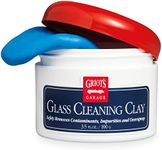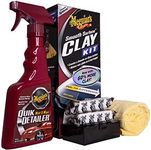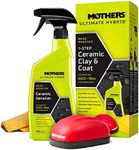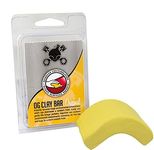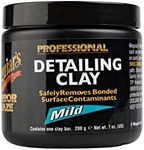Buying Guide for the Best Clay Bars
Choosing the right clay bar is an important step in car detailing, as it helps remove contaminants from your vehicle’s paint that regular washing can’t handle. Clay bars are used to achieve a smooth, clean surface before waxing or polishing. The key to picking the best clay bar for you is understanding your car’s needs, how often you detail, and how much contamination is present on your paint. By focusing on the main specifications, you can make an informed choice that will give you the best results without causing damage to your car’s finish.Abrasiveness (Grade)Abrasiveness, often referred to as grade, describes how aggressive the clay bar is at removing contaminants. Clay bars generally come in fine, medium, and heavy grades. Fine grade is gentle and best for lightly contaminated or newer paint, making it suitable for regular maintenance. Medium grade is more effective for moderate contamination and is a good all-rounder for most users. Heavy grade is the most aggressive and is used for heavily contaminated surfaces, such as vehicles that have never been clayed or are exposed to harsh environments. To pick the right grade, consider how rough your paint feels after washing—if it’s only slightly rough, go for fine; if it’s very gritty, medium or heavy may be needed, but always start with the least aggressive option to avoid unnecessary paint damage.
Bar Size and QuantityClay bars come in different sizes and quantities, usually measured in grams or ounces. Larger bars or multi-pack options are useful if you plan to clay your car multiple times or have a larger vehicle, while smaller bars are sufficient for occasional use or spot treatment. If you’re new to claying or only need to treat a small area, a smaller bar is easier to handle and less wasteful. For frequent detailers or those with multiple vehicles, larger bars or packs offer better value and convenience.
Ease of UseSome clay bars are softer and more pliable, making them easier to mold and work with, especially in cooler temperatures or for beginners. Others can be firmer and may require more effort to knead and flatten. If you’re new to using clay bars, look for one that is described as soft or easy to shape, as this will make the process smoother and reduce the risk of dropping or mishandling the clay.
Lubricant CompatibilityClay bars must be used with a lubricant to prevent scratching the paint. Some clay bars are designed to work with specific lubricants, while others are more universal and can be used with water, quick detailers, or dedicated clay lubricants. Check the product’s recommendations and consider what lubricants you already have or prefer to use. Choosing a clay bar that matches your preferred lubricant will make the process more efficient and help protect your paint.
Paint SafetyNot all clay bars are equally safe for all paint types. Some are formulated to be extra gentle for delicate or soft paint finishes, while others are more aggressive and may cause marring if not used carefully. If your car has a softer or custom paint job, opt for a clay bar that emphasizes paint safety or is labeled as safe for all finishes. For standard factory paint, most mainstream clay bars will be suitable, but always test on a small area first.






